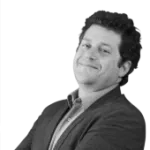I first wrote about information overload in the mid-1990s. The original article has long since been lost, and the magazine it appeared in sunk into the watery graveyard of old technology.
The same digital revolution that killed print has spawned trillions of web pages (not even Google knows how exactly many there are) and deposits somewhere between 300-500 emails into my inbox every single day. It would not be unreasonable to say that I’ve been suffering from information overload for quite some time.
Social media has compounded this deluge: I can be exposed to thousands of Facebook status updates and Tweets each day. Not only is it impossible to take it all in, the diversity of content is unbelievable. And it’s so distracting.
To paraphrase Nicholas Carr, author of The Shallows, I am living in perpetual state of distraction and interruption. It’s a wonder that I manage to get any work done.
The stats show I’m not alone: in 2009, an IDC & Xerox study found that the amount of information created in the enterprise is growing at 65% a year, while staff numbers are shrinking. Survey respondents spend as much as 26% of their time trying to manage information.
And because we can’t take it all in, we ignore it. It festers in our inboxes, or we kill it before we’ve read it. A LexisNexis Workplace Productivity Study in 2010 found that 90% of US knowledge workers admit to deleting emails without reading them properly.
So we evolve our own techniques for managing infobesity. This infographic highlights some of the coping strategies we use include prioritizing, delegating, queuing, limiting, escaping, refusing. I try, oh, I try to prioritize, but my default strategy is multi-tasking.
The problem is not just being overloaded. My brain is changing. This distracted, disrupted, flighty thinking is crowding out slower, contemplative thinking. And we need the latter for memory consolidation (transferring information from our short-term to long-term memory).
Having stuff in our long-term memory allows us combine disparate information into a new idea. This creativity is essential in my job. (Carr’s ideas about distraction undermining creativity are neatly captured in this distracting video but I’d urge you spend a little more time and ruminate on his book, The Shallows: What the Internet Is Doing To Our Brains.)
increasing the strain
The love-hate relationship with our digital lives is going to be even more strained as the Internet of Things and APIs turn the information downpour into a deluge.
Smart devices can already publish pulse rate, weight, walks, runs, rides, diet, plant health, baby sleep, coffee stock levels, weather reports, indoor air quality to the Internet, social media or a private portal. And this is the tip of the iceberg.
A similar trend is happening in industrial M2M where cars, trucks, pipelines, machines, meters and elevators are spewing out billions of status updates a day. Summaries and alerts will be finding their way into the information you need to consume each day.
I dread to think how much more information will be presented before our eyes when head-up displays like Google Glass become common place.
Already we are seeing the emergence of Glassware (apps for Google Glass), and when Glass is launched commercially in 2014, how long will it be before it is integrated with Facebook, Twitter and Tumblr? Wink, shoot, publish – all in the blink of an eye.
In part two of this post I'll discuss potential solutions for digital overload.
Stewart
image © Marek - Fotolia.com

Stewart Baines
I've been writing about technology for nearly 20 years, including editing industry magazines Connect and Communications International. In 2002 I co-founded Futurity Media with Anthony Plewes. My focus in Futurity Media is in emerging technologies, social media and future gazing. As a graduate of philosophy & science, I have studied futurology & foresight to the post-grad level.